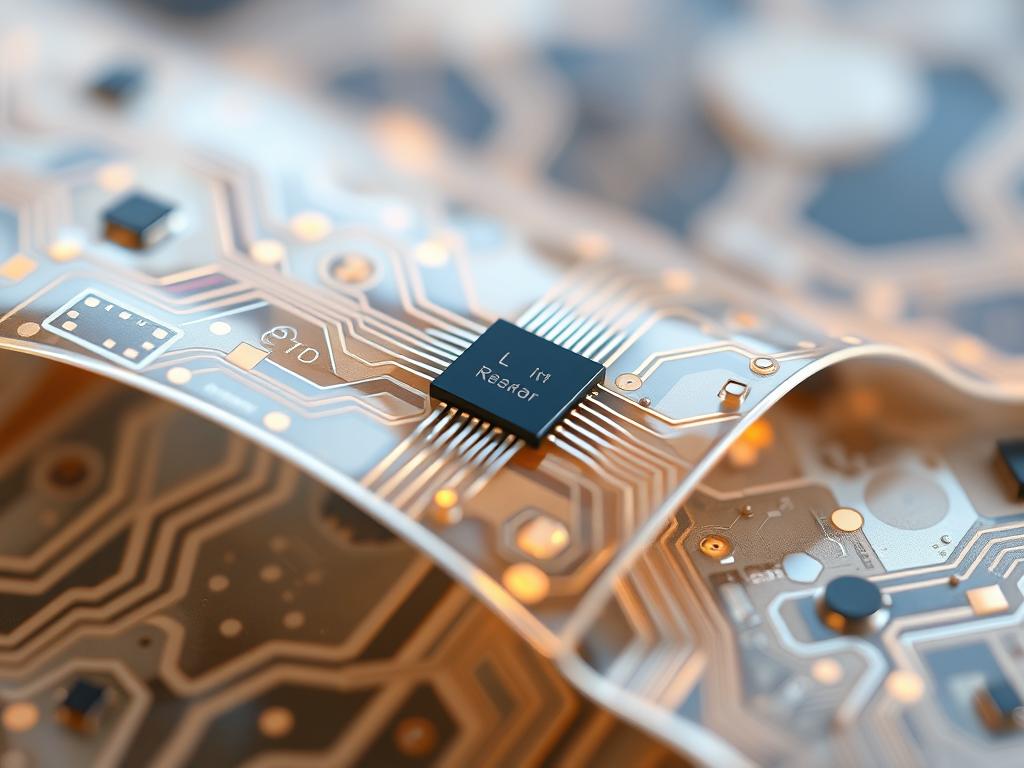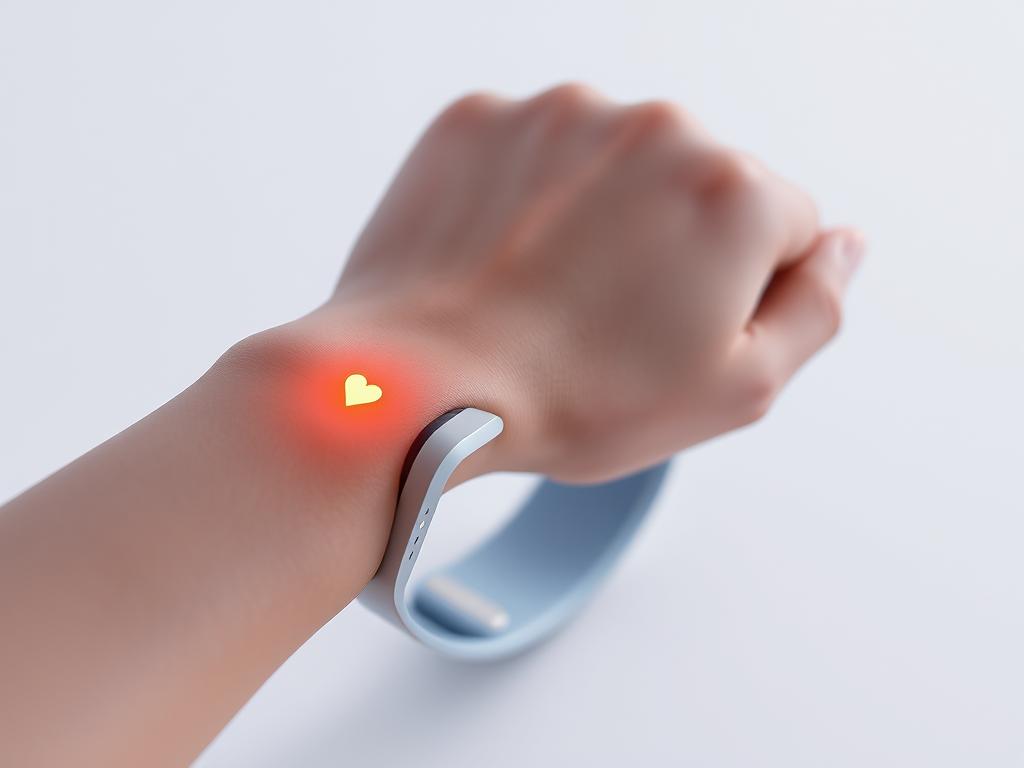The global wearable technology market is booming. It’s expected to hit $265.4 billion by 2026. Organic transistors are driving this growth. These tiny marvels are changing flexible electronics and wearable devices.
Organic transistors are the heroes of wearable tech. They’re flexible and light, unlike rigid silicon transistors. This makes them perfect for smart watches and health monitors.
These transistors are incredibly versatile. They can be made cheaply, allowing mass production of flexible electronics. Organic transistors are set to change how we use devices and interact with our world.
Organic Transistor Basics
Organic transistors are changing printed circuits in wearable electronics. They use unique semiconductor materials for flexible, lightweight designs. Let’s explore what makes organic transistors so promising.
Material Properties
Organic semiconductors differ from traditional silicon-based ones. They’re made from carbon-based compounds engineered for specific properties. These materials are flexible and can be processed at lower temperatures.
This allows for low-cost fabrication techniques. Organic semiconductors offer new possibilities in electronic device design.
Device Physics
Organic transistors work through charge transport in organic molecules. Voltage creates an electrical current as charge carriers move through the material. Molecular structure and film morphology influence this process.
Fabrication Methods
Low-cost fabrication is a major advantage of organic transistors. Common methods include inkjet printing, roll-to-roll processing, and spin coating.
These techniques enable large-scale production of flexible electronic devices. This opens up new possibilities for wearable technology applications.
“Organic transistors represent a paradigm shift in electronics, combining flexibility with functionality in ways we’ve never seen before.”
Flexibility Engineering
Flexibility engineering creates bendable devices that can withstand repeated bending and folding. It focuses on developing flexible electronics that maintain performance while adapting to various shapes. This field is crucial for bendable devices in many applications.
Mechanical Design
Mechanical design of flexible electronics involves careful material selection and structural planning. Engineers use thin, pliable substrates and conductive materials that can bend without breaking. This approach allows devices to conform to curved surfaces or stretch with movement.

Strain Response
Understanding how bendable devices respond to strain is crucial for their reliability. Stress-strain analysis helps predict how these electronics will perform under different conditions. Scientists use advanced modeling to simulate bending scenarios and optimize device layouts for flexibility.
Durability
Enhancing the durability of flexible electronics is a major focus in this field. Researchers are developing new coating materials and encapsulation techniques to protect sensitive components. These innovations aim to improve the mechanical stability of bendable devices.
- Use of stretchable substrates
- Integration of stress-relief structures
- Development of self-healing materials
Engineers are paving the way for more robust and versatile flexible electronics. These advancements are essential for widespread adoption of bendable devices. From wearable health monitors to foldable displays, flexible electronics have diverse applications.
Manufacturing Process
Organic transistor production involves complex steps, from material creation to device assembly. It uses advanced techniques for scalable production and high standards. This process ensures top-quality devices for various uses.
Material Synthesis
Organic semiconductor synthesis is key in transistor manufacturing. Scientists craft these materials in labs, perfecting their properties. They aim to balance conductivity, flexibility, and durability in semiconductors.
Device Assembly
Roll-to-roll printing is a game-changer in the assembly phase. This method allows for non-stop production, boosting output and cutting costs.
Quality Control
Quality assurance is vital in organic transistor manufacturing. Strict testing ensures each device meets performance standards. This includes checking electrical properties, flexibility, and longevity.
| Manufacturing Stage | Key Process | Quality Control Focus |
|---|---|---|
| Material Synthesis | Lab-based organic semiconductor creation | Purity and consistency |
| Device Assembly | Roll-to-roll printing | Precision and uniformity |
| Final Testing | Performance validation | Electrical and mechanical properties |
Organic transistor manufacturing blends innovative techniques with strict quality measures. This approach yields high-performance, reliable devices ready for various applications.
Performance Characteristics
Organic transistors blend flexibility and functionality, making them perfect for wearable electronics. They offer unique features that set them apart from traditional inorganic devices. These characteristics make them ideal for various innovative applications.
Operating Parameters
Charge carrier mobility is crucial in organic transistors. It affects how quickly electrons or holes move through the semiconductor material. Recent advancements have significantly improved this aspect in organic devices.
Threshold voltage is another key parameter. It determines the minimum voltage needed to activate the transistor. Organic transistors typically have lower threshold voltages, benefiting low-power wearable applications.

Stability
Environmental stability is vital for wearable electronics. Organic transistors must perform well under varying conditions like temperature and humidity changes. Recent material engineering developments have greatly enhanced the stability of these devices.
Lifetime Analysis
The longevity of organic transistors is crucial for practical applications. Device degradation over time can affect performance and reliability. Researchers are working to improve organic transistor lifespans through better materials and fabrication techniques.
| Parameter | Organic Transistors | Silicon Transistors |
|---|---|---|
| Charge Carrier Mobility | 0.1-10 cm²/Vs | 1000-1500 cm²/Vs |
| Threshold Voltage | 0.5-2 V | 0.7-1 V |
| Environmental Stability | Moderate | High |
| Device Degradation Rate | 5-10% per year | 1-2% per year |
Integration Solutions
Wearable electronics need various parts to work together smoothly. Flexible circuits are the core of these devices. They allow for compact and adaptable designs. Organic transistors have opened new paths for light and conformable electronic systems.
Circuit Design
Designing wearable device circuits needs a balance of function and flexibility. Engineers create flexible circuits that can bend and stretch while working well. These circuits often use low-power parts to make batteries last longer.
Sensor Integration
Sensors are key for wearables to gather data and interact with surroundings. Biosensors are vital for health tracking, measuring body functions. These sensors must fit into the flexible base for comfort and accuracy.
Power Management
Good power management is crucial for wearable devices to last long. Energy harvesting methods are now used to support battery power. Solar cells, piezoelectric materials, and thermoelectric generators can capture energy from the environment.
| Power Source | Advantages | Challenges |
|---|---|---|
| Solar cells | Abundant energy source | Dependent on light exposure |
| Piezoelectric | Harvests motion energy | Limited power output |
| Thermoelectric | Utilizes body heat | Requires temperature gradient |
Combining power management with low-power electronics is vital for self-sustaining wearables. As technology grows, we’ll see more clever ways to boost wearable tech abilities.
Application Areas
Organic transistors are changing wearable electronics. They enable new applications across industries. These flexible, lightweight components create cutting-edge devices that blend into our lives.
Health Monitoring
Wearable health sensors with organic transistors are improving patient care. They track vital signs and monitor chronic conditions. These devices alert doctors to potential health issues in real-time.
E-textiles with organic transistors can measure heart rate and body temperature. They can even analyze sweat composition.

Smart Textiles
E-textiles are pushing fashion and function limits. Organic transistors create fabrics that change color and regulate temperature. Some can even generate electricity from body heat.
These smart textiles have uses in sports, military, and everyday wear.
Interactive Devices
Organic transistors are changing how we interact with electronics. Flexible displays and touch-sensitive surfaces are becoming more responsive. Gesture-recognizing interfaces are getting more intuitive.
New applications include rollable smartphones and interactive clothing. Adaptive car interiors are also emerging.
| Application Area | Key Features | Examples |
|---|---|---|
| Health Monitoring | Continuous vital sign tracking | Smart patches, biosensing garments |
| Smart Textiles | Adaptive functionality | Color-changing fabrics, self-heating jackets |
| Interactive Devices | Flexible interfaces | Foldable displays, wearable keyboards |
Organic transistor technology keeps improving. We can expect more amazing wearable electronics soon. These versatile components are driving innovation in healthcare and fashion.
Testing and Validation
Testing and validation are vital for organic transistor-based wearable electronics. These steps ensure devices are safe, reliable, and user-friendly. Let’s explore the key aspects of this phase.
Performance Metrics
Benchmarking is crucial in evaluating wearable device performance. Key metrics include response time, sensitivity, and power consumption. Engineers use special tools to measure these factors under various conditions.
Reliability Testing
Accelerated aging tests simulate long-term use of wearable electronics. These tests expose devices to extreme conditions like high temperatures and humidity. They help predict product lifespan and identify potential weak points.
User Testing
User experience is crucial for wearable technology success. Real-world trials involve participants using devices in their daily lives. Feedback on comfort and ease of use guides final design improvements.
This process often reveals unexpected insights. It leads to more user-friendly and practical wearable solutions.
“User testing is not just about functionality; it’s about creating a seamless integration of technology into our daily lives.”
Combining performance metrics, reliability tests, and user evaluations is key. It helps create wearables that meet technical specs and provide a positive user experience.
Future Innovation
Organic transistors are set for major breakthroughs. New organic semiconductors are pushing limits in performance and function. These materials will transform wearable electronics, making them more efficient and durable.
New Materials
Researchers are creating organic compounds with better electrical traits and stability. These materials will speed up organic transistors and make them more reliable. The goal is to develop semiconductors that work well in tough conditions.
Advanced Applications
Bioelectronics is a key area for organic transistors. These flexible, body-friendly devices could change healthcare forever. They might lead to smart bandages and brain-computer links.
Market Growth
The future looks bright for organic transistor tech. People want more wearable tech, driving demand for flexible, light electronics. The eco-friendly aspect of these devices is also important.
Organic materials offer a greener option than traditional semiconductors. This shift to eco-friendly choices could boost market growth significantly.


